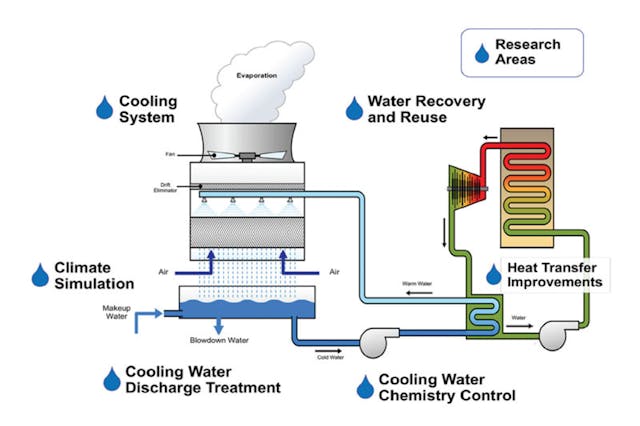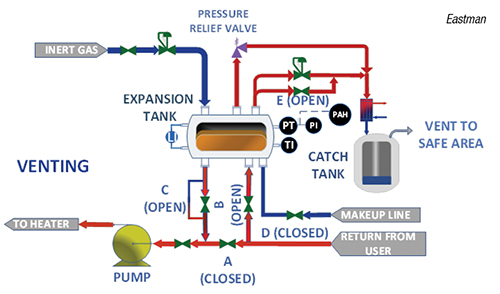Why DVS Heat Transfer Systems Use Nanotechnology to Outperform Traditional Cooling Systems
Wiki Article
Developments in Heat Transfer Equipments: What You Need to Know for Optimal Efficiency
Technologies in Heat transfer systems are transforming efficiency throughout different sectors. Advanced materials like graphene and nanofluids promise significant improvements in thermal conductivity. The assimilation of IoT and device learning uses chances for real-time tracking and boosted power performance. The landscape of thermal monitoring is quickly evolving. Comprehending these growths is necessary for attaining suitable system efficiency and sustainability in the future. What particular developments are shaping this change?Arising Materials for Enhanced Heat Transfer

Advanced Heat Exchanger Designs
While typical Heat exchangers have offered their purpose in various applications, advanced styles are now arising to satisfy the enhancing demands for effectiveness and efficiency. These ingenious styles, such as plate, shell-and-tube, and finned-tube Heat exchangers, integrate improved surface and enhanced circulation patterns to enhance thermal transfer prices. Additionally, portable layouts permit decreased area requirements without jeopardizing efficiency. Advanced materials, such as composites and corrosion-resistant alloys, additionally improve longevity and efficiency under severe problems. In addition, simulation technologies and computational liquid characteristics are significantly utilized to refine these layouts, making sure peak Heat transfer qualities. As markets look for to minimize energy consumption and make the most of output, the fostering of advanced Heat exchanger layouts is critical in accomplishing these purposes.The Duty of Nanotechnology in Heat Transfer
Nanotechnology plays an important role in improving thermal conductivity within Heat transfer systems. By manipulating products at the nanoscale, researchers have actually attained considerable improvements in power efficiency. These developments not only enhance efficiency however also add to more lasting power options.Boosted Thermal Conductivity
Significant improvements in thermal conductivity have actually emerged through the application of nanotechnology, transforming Heat transfer systems across various industries. By integrating nanoparticles right into Heat transfer fluids and materials, scientists have accomplished impressive increases in thermal conductivity. These nanoparticles, such as carbon nanotubes, graphene, and metal oxides, boost the Heat transfer residential properties because of their high surface and unique thermal qualities. The resulting compounds show improved performance in applications ranging from electronics cooling systems to renewable resource modern technologies. The capability to customize the size, form, and composition of nanoparticles allows for optimized thermal management remedies. As a result, nanotechnology continues to play a critical function in the advancement of a lot more efficient and effective Heat transfer systems, leading the way for enhanced commercial applications.
Power Efficiency Improvements

Assimilation of IoT in Heat Transfer Equipments
The combination of IoT in Heat transfer systems presents the implementation of clever sensing units that enhance functional performance. These sensors enable real-time data monitoring, enabling prompt have a peek here modifications and optimizations. This technological innovation has the possible to significantly boost efficiency and energy management in Heat transfer applications.Smart Sensors Implementation
As Heat transfer systems advance, the combination of smart sensing units through the Web of Things (IoT) has actually arised as a transformative approach. These sensing units make it possible for real-time monitoring of temperature, stress, and flow prices, improving system performance and dependability. By gathering and sending data, they help with proactive maintenance, reducing the threat of system failures. In addition, clever sensors add to power cost savings by refining operational criteria based upon ecological problems. Their capability to evaluate patterns and abnormalities permits notified decision-making, making sure peak efficiency of Heat transfer systems. As markets significantly adopt this technology, the application of smart sensors stands to reinvent exactly how Heat transfer systems are managed, leading the way for greater sustainability and enhanced efficiency outcomes.Real-Time Information Surveillance
Just how can real-time data keeping track of boost the effectiveness of Heat transfer systems? By incorporating Web of Things (IoT) innovation, Heat transfer systems can utilize continuous data collection from clever sensors. This real-time tracking allows for immediate analysis of stress, circulation, and temperature level prices, allowing operators to determine ineffectiveness promptly. Consequently, adjustments can be made to maximize efficiency, reduce power intake, and extend devices life-span. Furthermore, anticipating upkeep can be implemented, decreasing unexpected downtime and expensive fixings. The capacity to visualize performance metrics through control panels enhances decision-making, cultivating a positive method to system management. Eventually, real-time information keeping track of not just enhances operational effectiveness but also contributes to sustainability goals within industrial procedures.Energy Efficiency and Sustainability Trends
Energy effectiveness and sustainability fads are reshaping the landscape of Heat transfer systems, driving advancement and conformity throughout numerous markets. Organizations are increasingly prioritizing energy-efficient styles to decrease functional prices and decrease environmental influences. The combination of renewable resource resources is coming to be more prevalent, making it possible for Heat transfer systems to operate sustainably while meeting regulatory needs. Furthermore, advancements in products and modern technologies advertise lower power intake and improve general performance. Lifecycle assessments are likewise acquiring traction, enabling companies to evaluate the ecological effect of Heat transfer systems from production to disposal. This concentrate on sustainability not just supports business responsibility yet likewise placements organizations competitively in a market where consumers progressively favor environment-friendly solutions. Power effectiveness and sustainability stay critical factors to consider for future growths in Heat transfer technology.Advancements in Thermal Administration Solutions
While the demand for effective Heat transfer continues to rise, developments in thermal monitoring solutions are arising to deal with both performance and sustainability difficulties. Advanced products, such as stage change materials and nanofluids, are being developed to boost Heat transfer performance - DVS Heat Transfer Systems. These materials enhance thermal conductivity and allow for better temperature regulation in various applications. Additionally, technologies like active thermal control systems are getting traction, making it possible for real-time adjustments to handle Heat circulation successfully. These systems add to energy cost savings and lower the environmental effect of thermal processes. In addition, the assimilation of IoT in thermal management helps with monitoring and anticipating maintenance, making sure maximized efficiency and durability of Heat transfer systems. Overall, these technologies stand for considerable strides towards even more sustainable thermal administration practicesFuture Instructions in Heat Transfer Modern Technology
Arising innovations in thermal management services signify an encouraging future for Heat transfer technology. Scientists are progressively concentrating on creating products with exceptional thermal conductivity and boosted energy efficiency. Developments such as nanofluids, which have suspended nanoparticles, supply substantial renovations in Heat transfer efficiency. Additionally, the integration of smart products that adjust to differing temperature conditions is obtaining traction, permitting more effective and receptive systems. The rise of additive manufacturing strategies is additionally enabling the layout of complicated Heat exchanger geometries that enhance liquid flow. The implementation of device understanding anchor formulas is expected to revolutionize the optimization of Heat transfer systems, assisting in anticipating maintenance and efficiency improvement. Jointly, these improvements are poised to change the landscape of Heat transfer modern technologies in numerous markets.
Regularly Asked Inquiries

Just how Do I Select the Right Heat Transfer System for My Application?
Selecting the right Heat transfer system includes reviewing application look at here demands, consisting of temperature level varieties, fluid homes, and efficiency demands. Assessing system kinds, upkeep considerations, and cost-effectiveness additionally plays a crucial role in making an educated decision.What Are the Maintenance Demands for Advanced Heat Exchangers?
Upkeep requirements for innovative Heat exchangers generally consist of routine examinations, keeping track of for leakages, cleansing of surface areas, and ensuring ideal flow prices. Complying with producer standards warranties effective procedure and prolongs the equipment's life-span.
Exactly How Do Ecological Aspects Affect Heat Transfer Effectiveness?
Environmental variables substantially influence Heat transfer efficiency. Variations in humidity, air movement, and temperature level influence thermal conductivity and convective Heat transfer, inevitably affecting system performance and necessitating consideration during the design and procedure of Heat transfer systems.What Safety And Security Standards Put On Heat Transfer Solutions?
Safety and security requirements for Heat transfer systems generally consist of guidelines from organizations such as ASME and ASTM. DVS Heat Transfer Systems. These criteria address materials, style, and operational techniques to guarantee dependability, efficiency, and security versus dangers in various applications
Just How Can I Troubleshoot Typical Heat Transfer System Issues?
Fixing usual Heat transfer system problems entails looking for leakages, making certain proper fluid flow, checking insulation integrity, and verifying temperature differentials. Recognizing these factors can help preserve system performance and protect against further problems.Nanotechnology plays an essential duty in improving thermal conductivity within Heat transfer systems. Considerable innovations in thermal conductivity have actually arised with the application of nanotechnology, changing Heat transfer systems throughout different sectors. Advancements in thermal conductivity via nanotechnology have actually led the method for impressive renovations in power effectiveness within Heat transfer systems. Power effectiveness and sustainability patterns are reshaping the landscape of Heat transfer systems, driving innovation and compliance throughout various industries. The integration of IoT in thermal management assists in surveillance and anticipating maintenance, making sure enhanced efficiency and longevity of Heat transfer systems.
Report this wiki page